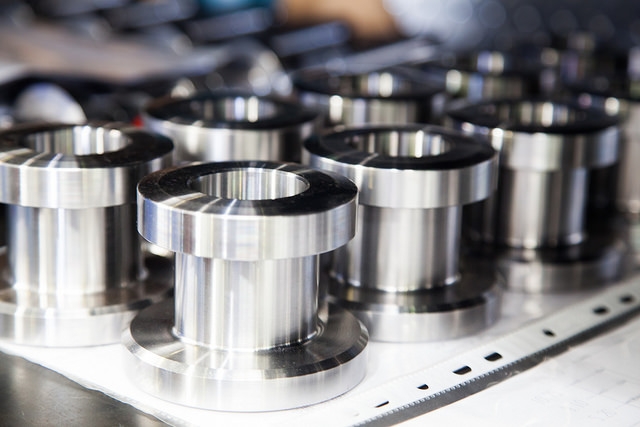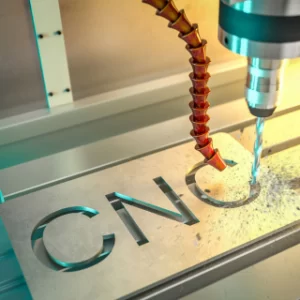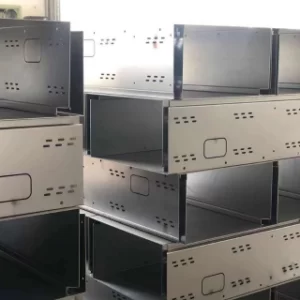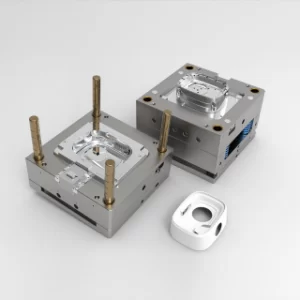Efficiency Unleashed: Exploring the Dynamics of Rapid CNC for Low-Volume Production
Computer Numerical Control (CNC) revolutionized the manufacturing landscape by automating machine tool operations. In today's fast-paced market, rapid CNC for low-volume production has emerged as a game-changer, bridging the gap between prototype and mass production. This approach not only accelerates production cycles but also offers unparalleled flexibility, meeting the dynamic demands of modern consumers.

How Rapid CNC Elevate Manufacturing Dynamics?
Tech Behind Accelerated Manufacturing
Rapid CNC leverages cutting-edge equipment and technologies to redefine the pace and precision of production. Central to this method are advanced machining centers that can quickly interpret digital files and execute operations. Coupled with high-speed spindles, efficient tool changers, and optimized tool paths, these machines achieve faster cycle times without compromising on accuracy.
From Precision to Pace
The contrast between rapid CNC and traditional CNC is evident in their operational speeds and adaptability. Traditional CNC, while precise, often involves longer setup times and slower production cycles, making it less feasible for quick-turnaround or low-volume jobs. Rapid CNC, on the other hand, excels in these scenarios. It capitalizes on software advancements and real-time feedback systems to minimize manual adjustments, streamline workflows, and reduce lead times. The result? Faster, more flexible manufacturing processes that cater to the ever-evolving demands of the market.
What Makes Rapid CNC a Game-Changer for Low-Volume Production?
Shortened Lead Times
In today's competitive market, time is of the essence. Rapid CNC's superior speed caters to this urgency, providing drastically shortened lead times. Its fast-paced processes stand in sharp contrast to traditional methods, allowing products to reach the market more swiftly.
Cost Efficiency
Cost efficiency is another hallmark of rapid CNC. By optimizing machine operations, it reduces resource wastage, leading to significant savings. Businesses benefit economically, gaining a competitive edge through lower production costs without sacrificing quality.
Flexibility in Production
The adaptability of rapid CNC offers unparalleled flexibility in production. Whether it's creating bespoke items or tweaking designs to cater to evolving market demands, rapid CNC responds with agility. The era of one-size-fits-all is fading; in its place, customized solutions reign supreme.
Enhanced Precision and Accuracy
Lastly, rapid CNC doesn't trade speed for precision. Technological advancements ensure enhanced precision and accuracy. This meticulous attention to detail is crucial, especially in industries where a fraction of a millimeter can make a world of difference. From aerospace to medical fields, the blend of speed and precision offered by rapid CNC is not just desirable – it's essential.
How We Overcome the Technical Hurdles of Implementing Rapid CNC?
Training and Workforce Adaptation
Implementing rapid CNC for low-volume production, while advantageous, poses certain technical challenges that manufacturers must address. One significant hurdle is training and workforce adaptation. Transitioning to sophisticated CNC machinery requires upskilling employees to competently handle new technologies. This not only involves understanding the equipment but also mastering associated software, maintaining machine precision, and troubleshooting operational issues. Workforce adaptation extends beyond handling machinery; it necessitates a shift in mindset to embrace new, agile production methodologies, which may disrupt established working patterns.
Investment and ROI Considerations
Another pivotal challenge is the investment and ROI considerations. The initial financial outlay for rapid CNC equipment can be substantial, deterring many businesses. Understanding and forecasting the return on this investment involves evaluating numerous factors, including production speed increases, potential market expansion, customer satisfaction, and the reduction of waste and operating costs. Decision-makers need detailed, forward-looking analyses to justify the hefty upfront costs associated with transitioning to rapid CNC.
The Future of Rapid CNC in Low-Volume Production
Looking ahead, these considerations play a crucial role in shaping the future of rapid CNC in low-volume production. As technology evolves, so too does the economic landscape within which these machines operate. Manufacturers may need to strategize for potential disruptions, including advances in materials science, shifts in consumer demand, and developments in competitive manufacturing technologies like 3D printing. Balancing these dynamic elements is key to leveraging rapid CNC's full potential and ensuring sustainable, future-proof operations that can adapt to an ever-changing market landscape.
What Lies Ahead for Rapid CNC with Upcoming Technological Advancements?
Potential Shifts in Industry Reliance
The realm of rapid CNC is poised for transformative technological advancements in the coming years. One significant development will likely be the integration of AI and machine learning into CNC systems. These technologies promise to further optimize tool paths, predict maintenance needs, and improve overall efficiency, allowing for even quicker turnaround times and greater precision.
With advancements in technology, we may also see a shift in industry reliance. Industries previously reliant on more traditional manufacturing methods might pivot to rapid CNC, lured by its promise of speed and adaptability. This could lead to a broader application spectrum, from electronics and healthcare to consumer goods and beyond.
Environmental Implications and Sustainability
Moreover, as the global emphasis on environmental implications and sustainability intensifies, rapid CNC technology is predicted to evolve in eco-friendly directions. Energy-efficient machines, coupled with software algorithms designed to minimize waste, will become industry standards. The integration of recycled materials in CNC processes and innovations to reduce coolant and lubricant usage are also on the horizon. Furthermore, as the line between digital design and physical manufacturing continues to blur, we might witness a reduction in prototypes, conserving resources by directly transitioning from digital mock-ups to final products.
In essence, the future of rapid CNC isn't just about faster and more precise manufacturing; it's about evolving in a manner that's in harmony with both market needs and environmental imperatives. Embracing these technological advancements will not only solidify rapid CNC's position in modern manufacturing but also contribute to a more sustainable and efficient production landscape.
Rapid CNC: The Pinnacle of Modern Manufacturing's Evolution
In the ever-evolving realm of manufacturing, rapid CNC for low-volume production emerges as a beacon of efficiency and adaptability. Bridging the gap between prototyping and mass production, it embodies the future of customized, swift, and sustainable manufacturing. As industries grapple with the demands of a dynamic market, embracing the advantages and innovations of rapid CNC becomes not just an option, but a necessity for staying ahead.




